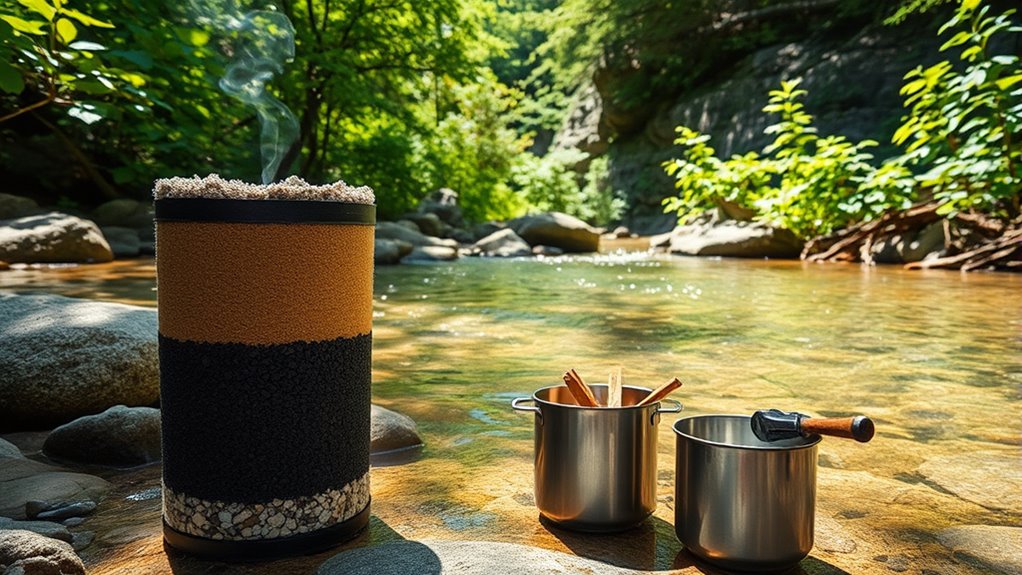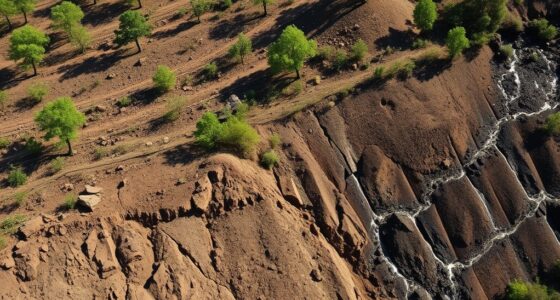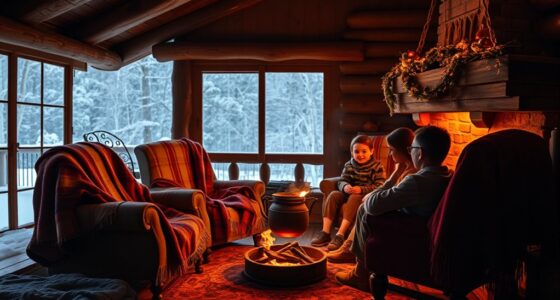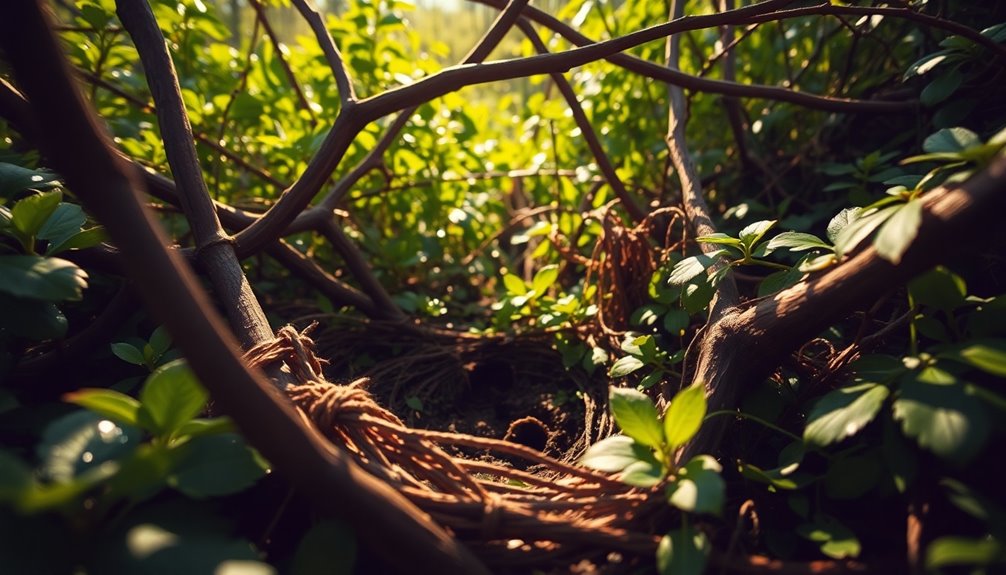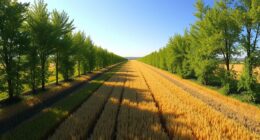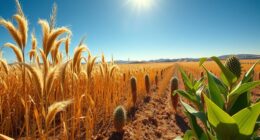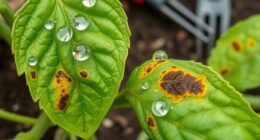To purify water in the wilderness, start by boiling it for at least one minute, or three minutes at high altitude. You can also use filters like pump or gravity-fed options for effective purification. Chemical treatments using chlorine or iodine are portable and straightforward. If you're feeling adventurous, alternative methods like distillation or using heat stones can work, too. To learn about specific techniques and safety tips, keep exploring the various options available.
Key Takeaways
- Boil water for at least one minute, or three minutes at high altitude, to kill harmful microorganisms.
- Use a filtration system, like pump or gravity-fed filters, to remove sediments and improve water clarity.
- Treat water with chemical disinfectants, such as chlorine or iodine, following manufacturer instructions for safe consumption.
- Utilize UV light treatment to effectively neutralize pathogens without reliance on water clarity.
- Always choose flowing water sources and avoid areas near contamination to ensure safer water collection.
Boiling Water for Purification
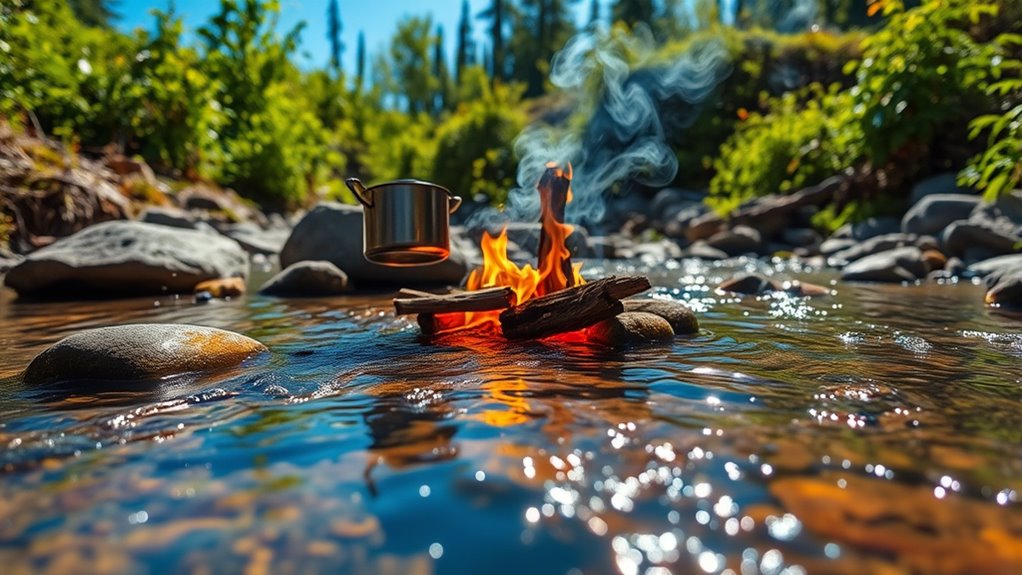
Boiling water is one of the most reliable ways to purify water in the wilderness. To get started, fill a pot with clear water from a natural source.
Place it over your heat source—like a campfire or stove—and bring the water to a rolling boil. Let it boil for at least one minute, or three minutes if you're at a high altitude.
Once done, remove the pot from the heat and allow the water to cool before drinking. Remember, boiling kills most bacteria, viruses, and parasites, but it won't remove sediments or chemicals.
If the water is cloudy, filter it first. Always use a clean container to prevent re-contamination. Enjoy your safe hydration!
Effective Filtration Techniques
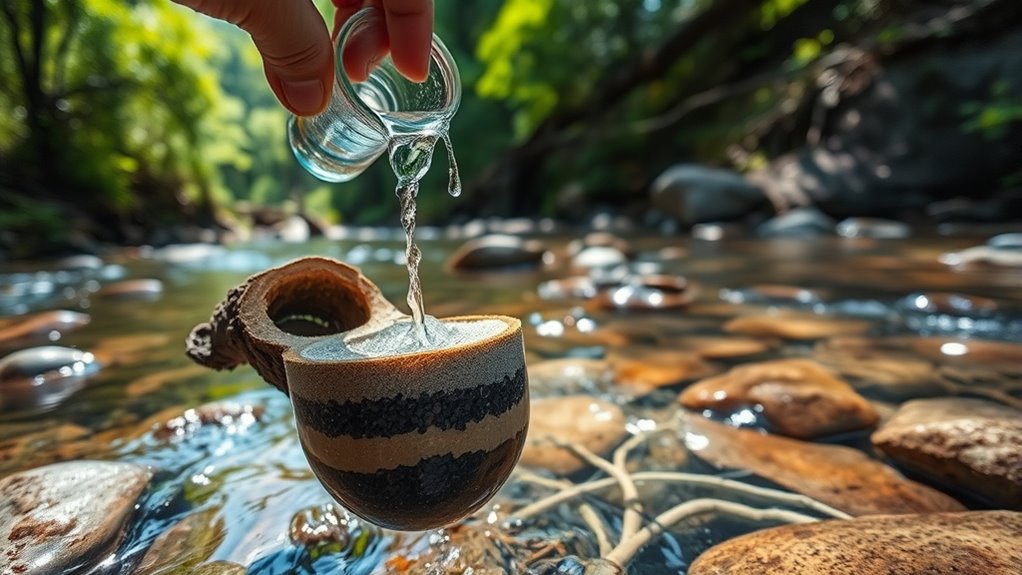
Effective filtration techniques can greatly enhance your ability to access safe drinking water in the wilderness. You can choose from various filters, including pump, gravity-fed, and inline options.
Pump filters require manual effort, providing around one quart per minute, but they can be tiring for larger volumes.
Gravity-fed filters, like the Platypus GravityWorks, are perfect for groups, using gravity to filter water effortlessly and often at a lower cost.
Inline filters, such as the Sawyer Squeeze, are lightweight and versatile, allowing you to drink directly from water sources.
For emergencies, primitive methods using sand or soil can help remove sediment, but they won't guarantee safe drinking water.
Regular maintenance is key to ensuring your filter remains effective.
Chemical and UV Water Treatment
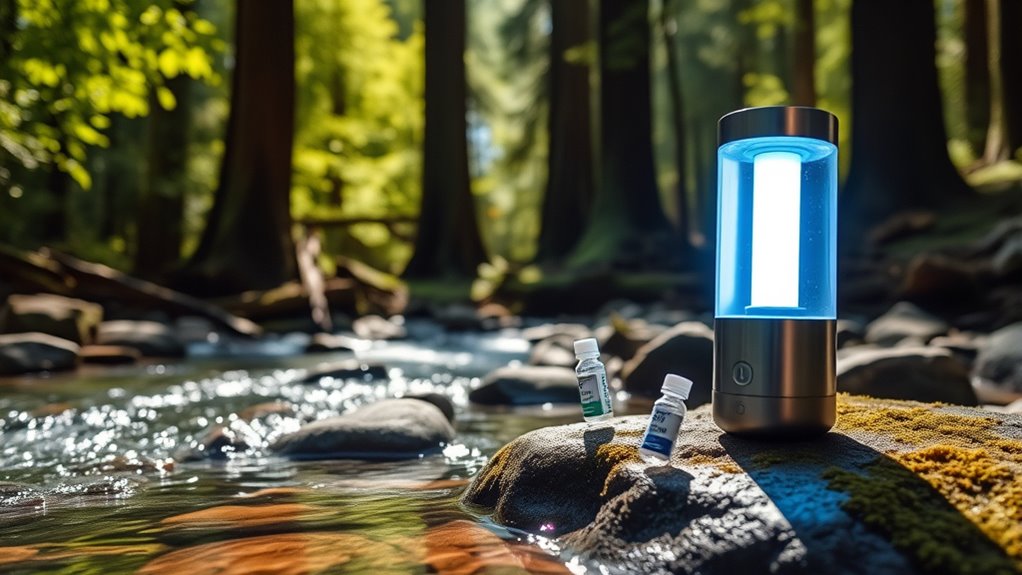
When you're in the wilderness, ensuring your water is safe to drink is crucial.
Chemical water treatment, using chlorine or iodine, effectively disinfects against bacteria, viruses, and some protozoa. You simply add tablets or drops to your water, following the manufacturer's instructions, and let it sit for the recommended time. It's portable, easy, and relatively inexpensive, though it may leave a taste or odor.
Alternatively, UV water treatment uses UV light to damage the DNA of harmful microorganisms. You can either use portable UV purifiers or solar disinfection with clear plastic bottles, needing at least six hours of sunlight.
While both methods are effective, chemical treatment is less dependent on water clarity and environmental conditions, making it a reliable choice in the wild.
Alternative and Traditional Methods
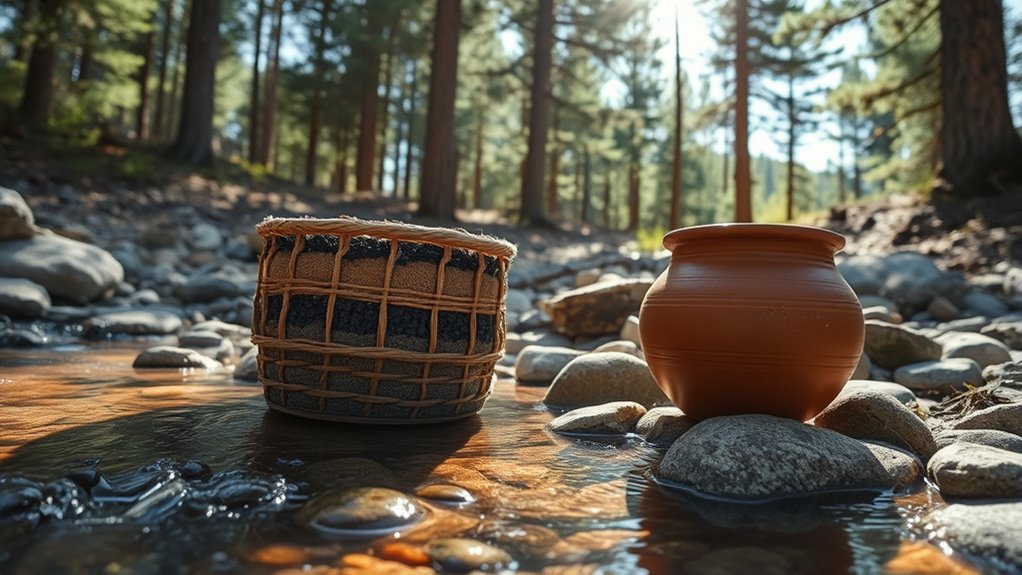
While modern methods like chemical treatment and UV purification are popular, there are numerous alternative and traditional techniques for purifying water in the wilderness.
Boiling water for at least five minutes effectively kills most bacteria and microorganisms. If you need to purify saltwater or remove contaminants, try distillation.
In a pinch, heat stones in a fire and drop them into water to raise its temperature. Sedimentation allows particles to settle, clarifying the water before further purification.
You can also create a simple filter using sand, rocks, and charcoal. Lastly, certain plants, like Oregon Grape, have antimicrobial properties that can help.
Embrace these methods to ensure safe drinking water when you're out in the wild!
Preparation and Safety Tips
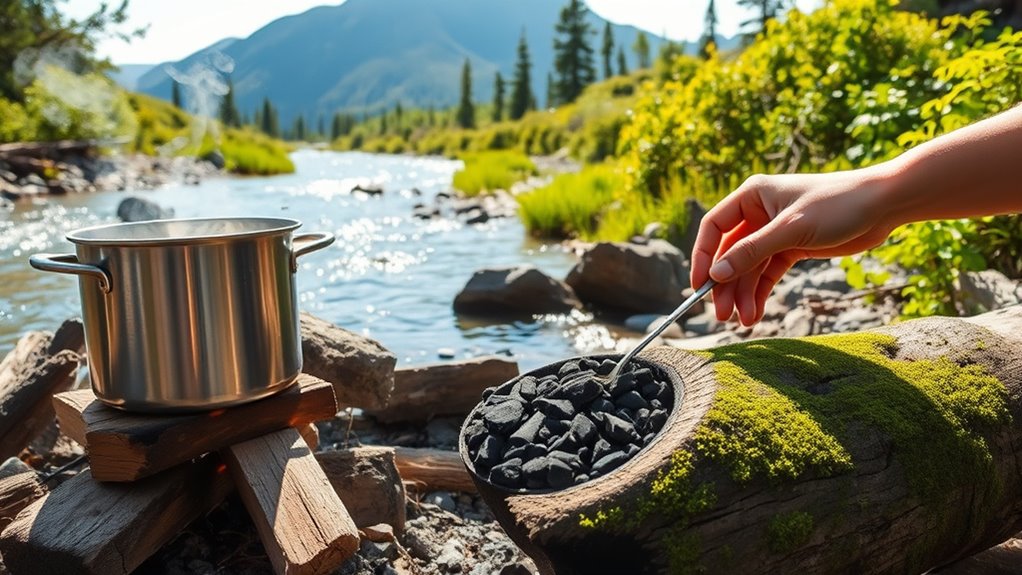
In the wilderness, preparing for safe water purification is crucial for your health and well-being. Start by identifying safe water sources, opting for flowing water over stagnant. Avoid areas near agriculture or wildlife to minimize contamination risks. Talk to locals about water quality to get valuable insights.
Always pack essential gear, including reliable purification devices, considering your group's needs. When collecting water, choose clear sources and watch for danger signs like dead animals. Maintain hygiene to prevent cross-contamination, and follow Leave No Trace principles.
Always treat water before consumption, as untreated supplies harbor pathogens that can lead to serious illnesses. Additionally, familiarize yourself with water purification methods to ensure you're prepared for various situations. Lastly, carry backup purification methods and keep your equipment lightweight for easier transport.
Frequently Asked Questions
How Can I Identify Safe Water Sources in the Wilderness?
To identify safe water sources in the wilderness, pay attention to vegetation and wildlife.
Look for green plants, animal tracks, and signs of animal activity, as these often lead to water. Valleys and low areas typically hold water due to gravity.
Listen for running water sounds and observe the sky for fog or color changes.
Always visually inspect water for contaminants before considering it safe to drink.
What Do I Do if I Have No Boiling Equipment?
Did you know that solar disinfection can kill up to 99.9% of pathogens in water?
If you don't have boiling equipment, try filling clear plastic bottles with water and leaving them in direct sunlight for at least six hours.
Alternatively, you can use iodine or chlorine tablets for disinfection.
Another option is to filter water through sand or charcoal to remove impurities, making it safer to drink.
Always prioritize your health!
Can I Use Salt Water for Purification?
You can't use saltwater directly for purification since its high salt content makes it unsafe to drink.
Instead, you need to purify it first by utilizing methods like distillation or reverse osmosis to remove the salt and impurities.
If you're in a pinch, look for alternative freshwater sources nearby.
It's crucial to ensure that the water you consume is safe and free from harmful contaminants, so always prioritize proper purification techniques.
How Long Does Purified Water Last Before It Becomes Unsafe?
Purified water can last a long time if you store it properly. Unopened bottled water might last indefinitely, but once you open it, aim to drink it within a week or two.
If you keep it in a cool, dark place, you'll extend its shelf life. Just remember, even purified water can become unsafe if it's exposed to contaminants, so always handle it carefully and check for any off-tastes or odors.
Are There Any Signs of Contaminated Water?
When you're assessing water quality, look for clear signs of contamination. Discolored water, strong odors, and excessive debris indicate pollution.
Watch out for algae blooms, which can deplete oxygen, and be alert for dead fish or wildlife, as these are serious red flags.
Trust your instincts; if the water looks or smells off, it's best to avoid it. Always prioritize your health by ensuring the water you use is clean and safe.
Conclusion
So, you're out in the wild, living your best Bear Grylls life, but let's not turn your next sip into a game of "guess what's in my water." Whether you're boiling it like a campfire chef or channeling your inner mad scientist with chemicals, remember: water's meant to hydrate, not to host a bacteria party. So, gear up, stay safe, and keep your thirst quenched—because nothing says wilderness adventure like drinking responsibly!

